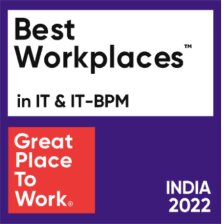Remote Hiring: Best Practices for Screening and Onboarding from a Distance
In the evolving landscape of work, the surge in remote employment has necessitated a rethink of traditional hiring practices. Organizations are now tasked with developing remote hiring processes that are not only efficient but also capable of identifying the best talent across geographic boundaries. This blog delves into best practices for remote screening and onboarding, ensuring that businesses can adapt and thrive in this new normal by attracting and integrating top talent from anywhere in the world.
Adapting Screening Practices for Remote Hiring
Transitioning to Digital Platforms
The first step in adapting to remote hiring is selecting the right digital platforms, which will lay the groundwork for the entire recruitment process:
- Video Interviewing Platforms: Solutions like Zoom, Microsoft Teams, and Google Meet offer reliable, high-quality video conferencing features that are crucial for conducting seamless video interviews.
- Skills and Personality Assessments: Online platforms such as Criteria Corp, Plum, and HireVue enable employers to administer tests that assess technical skills, cognitive abilities, and personality fit, all crucial for determining the right candidate.
Enhancing the Screening Process
To ensure that the remote screening process is as effective as in-person assessments:
- Conducting Effective Video Interviews: Candidates and interviewers should ensure they are in a quiet, professional setting with good lighting. Interviewers should also be trained on how to conduct engaging and effective interviews remotely.
- Utilizing Digital Tools: Employ tools for real-time collaboration during the interview, such as shared whiteboards or coding platforms, to assess problem-solving skills interactively.
Best Practices
Creating a robust remote screening process involves:
- Develop Transparent Guidelines: Clearly define the roles and responsibilities, necessary skills, and cultural fit aspects for each position. This helps in creating a structured interview and assessment process that is consistent and fair.
- Ensure an Unbiased Process: Implement structured interviews where each candidate is asked the same set of predetermined questions in the same order. This standardization helps mitigate bias and makes comparisons between candidates more straightforward.
Effective Communication and Candidate Engagement
Communication Strategies
Effective communication is the backbone of successful remote hiring:
- Timely Updates: Keeping candidates informed about the status of their application at each stage builds trust and respect. Automated emails, personalized feedback, and clear timelines should be communicated to keep candidates engaged.
- Multichannel Communication: Utilize a combination of emails, instant messaging, video calls, and even traditional phone calls to cater to different communication preferences.
Building Engagement
Maintaining candidate engagement in a remote setting requires thoughtful strategies:
- Create a Positive Candidate Experience: From the initial contact, every interaction should reflect the company’s values and professionalism. This includes being punctual for video calls, respecting the candidate’s time, and providing a welcoming atmosphere even in a digital space.
- Convey Company Culture Digitally: Use resources such as virtual office tours, videos from team members, and live Q&A sessions with potential future colleagues to convey the company’s culture and work environment.
Remote Onboarding Best Practices
Pre-Onboarding Preparation
Ensuring a smooth start for new hires is crucial:
- IT Infrastructure: Arrange for the delivery and setup of any necessary hardware. Software and access credentials should be configured ahead of the start date to avoid delays in the new hire becoming productive.
- Detailed Onboarding Schedules: Provide a comprehensive schedule that includes training sessions, key meetings, and introductions that will occur during the first few months.
Engagement and Integration
Properly integrating new hires into the company culture and their teams is pivotal:
- Foster Team Integration: Organize virtual coffee meetings, team lunches, and happy hours to build rapport and camaraderie.
- Regular Check-ins: Managers should schedule regular one-on-one meetings with new hires to discuss progress, address any concerns, and help them navigate their new roles.
Tools and Technologies
Overview of Essential Tools
Choosing the right tools can enhance the efficiency and effectiveness of remote hiring:
- Video Conferencing Software: Essential for various stages of hiring, these platforms should be chosen based on reliability, ease of use, and integration capabilities.
- Collaboration Tools: Slack, Microsoft Teams, and Asana help keep teams connected, facilitate project management, and ensure everyone is aligned on their tasks.
Leveraging Technology for Better Outcomes
The use of technology is pivotal in transforming remote hiring and onboarding processes. Implementing the right tools not only simplifies various tasks but also enhances the effectiveness and scalability of recruitment efforts. Here’s how organizations can best leverage technology for optimal results:
Streamlining Administrative Tasks
- Automated Scheduling: Tools like Calendly and Doodle eliminate the back-and-forth often associated with scheduling interviews. By allowing candidates to choose from pre-defined available slots, these tools help reduce administrative overhead and speed up the scheduling process.
- Applicant Tracking Systems (ATS): An ATS such as Greenhouse or Lever can automate many aspects of the recruitment process, from posting job openings to tracking the status of applications. This not only helps in organizing the recruitment process but also in maintaining a database of candidates for future opportunities.
- Digital Document Management: Platforms like DocuSign and Adobe Sign facilitate the secure and efficient handling of employment contracts and other necessary paperwork, ensuring that all documents are signed and stored digitally, which speeds up the onboarding process and reduces paperwork errors.
Enhancing Candidate Assessment
- Virtual Reality (VR) and Augmented Reality (AR): These technologies can be used to create immersive job simulations and skills assessments, allowing candidates to demonstrate their abilities in realistic job scenarios. This is especially useful for roles that require spatial awareness, technical skills, or a high level of interaction.
- Advanced Analytics: Utilizing analytics tools can help HR teams to analyze data from recruitment processes to identify trends, predict hiring outcomes, and refine their strategies. For example, analytics can reveal which sourcing channels are yielding the best candidates or which interview processes are the most efficient.
Improving Candidate and Employee Engagement
- Interactive Onboarding Portals: Customizable portals can provide new hires with a central hub for all onboarding-related information, including training materials, introductory videos, and essential paperwork. These portals can be accessed before the official start date, allowing new hires to feel prepared and welcomed.
- Collaboration and Productivity Tools: Platforms like Microsoft Teams, Slack, and Trello are essential for maintaining communication and collaboration among distributed teams. They facilitate real-time communication, file sharing, and project tracking, which are crucial for integrating new hires into teams and keeping them engaged in their new roles.
Maintaining Security and Compliance
- Security Tools: With the increase in remote work, ensuring the security of communications and data is paramount. Tools such as VPNs, encrypted messaging apps, and secure file-sharing services help protect sensitive information.
- Compliance Software: Remote hiring often involves navigating various legal jurisdictions and employment laws. Compliance software can help HR teams stay updated on local and international laws, ensuring that the hiring process adheres to all legal requirements.
By leveraging these technological solutions, organizations can not only optimize their remote hiring and onboarding processes but also provide a smoother and more engaging experience for candidates and new hires. The strategic use of technology not only aids in administrative efficiency but also plays a crucial role in building a sustainable and scalable remote workforce.
Conclusion
Refining remote hiring and onboarding processes is crucial for businesses aiming to succeed in a remote-first world. By adopting best practices in screening, communication, and onboarding, and leveraging the right tools, organizations can ensure they not only fill positions with the best candidates but also integrate them effectively into the company culture, irrespective of physical location.









